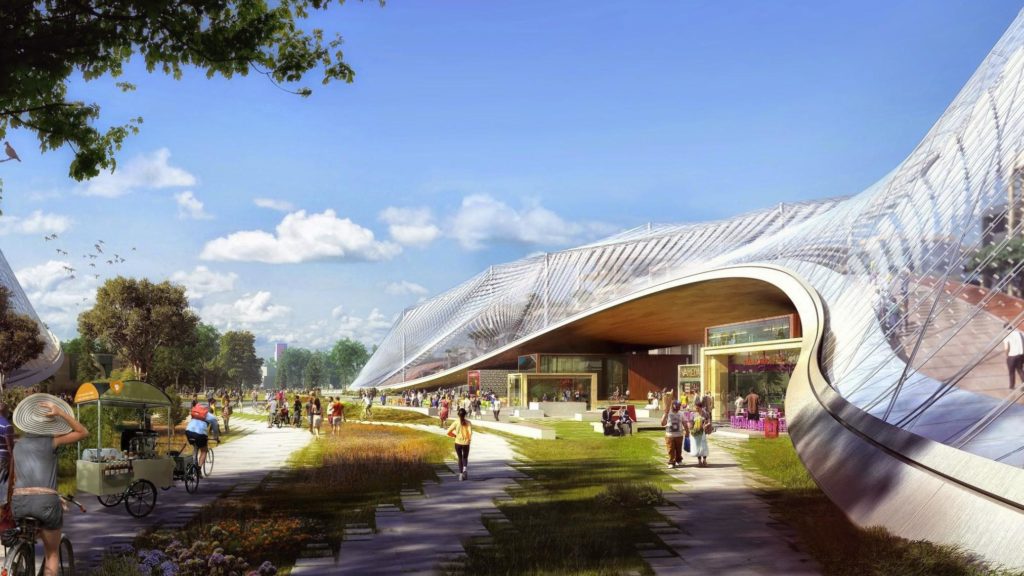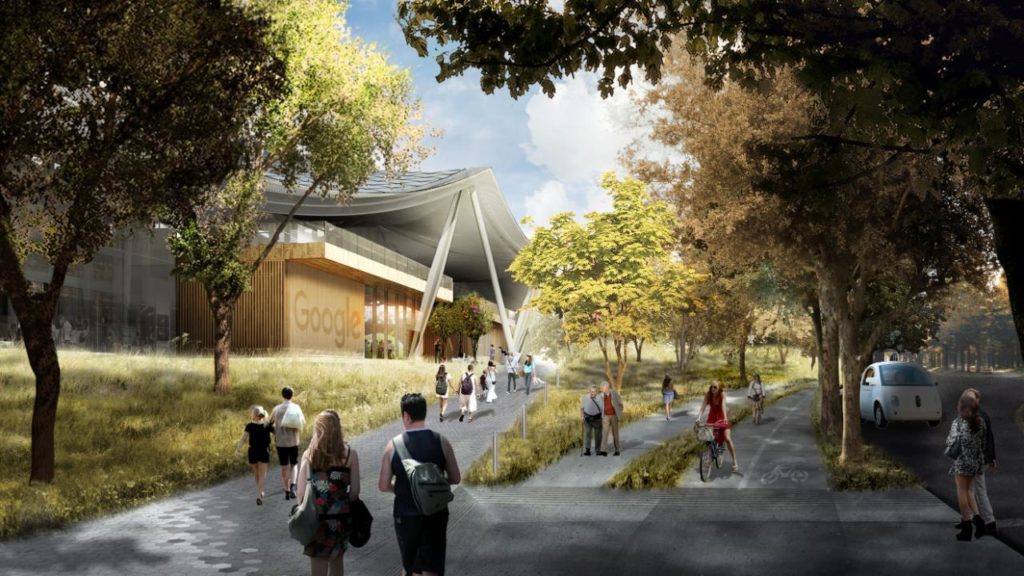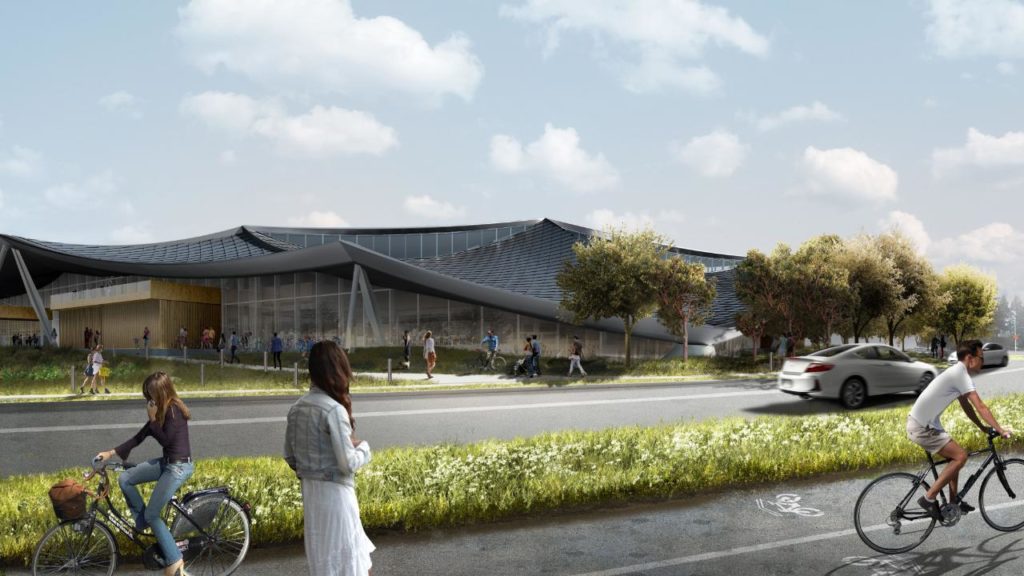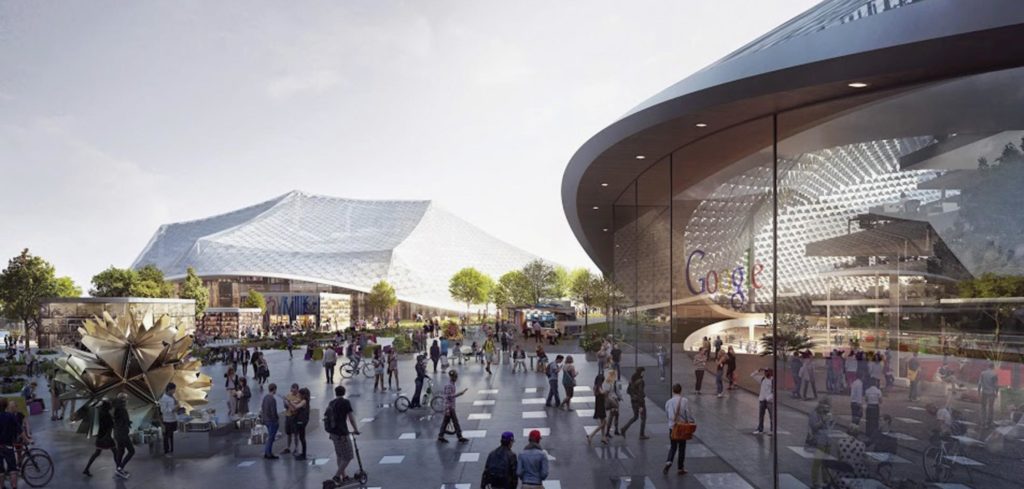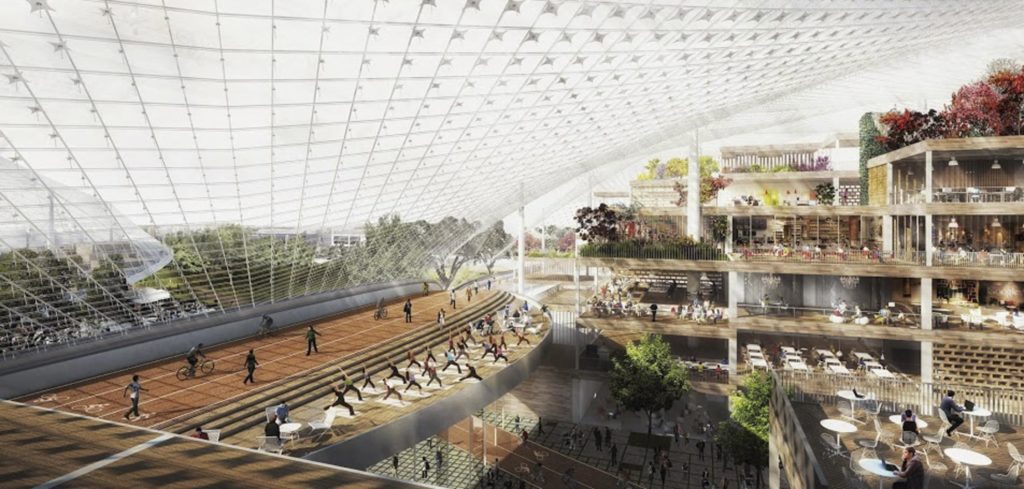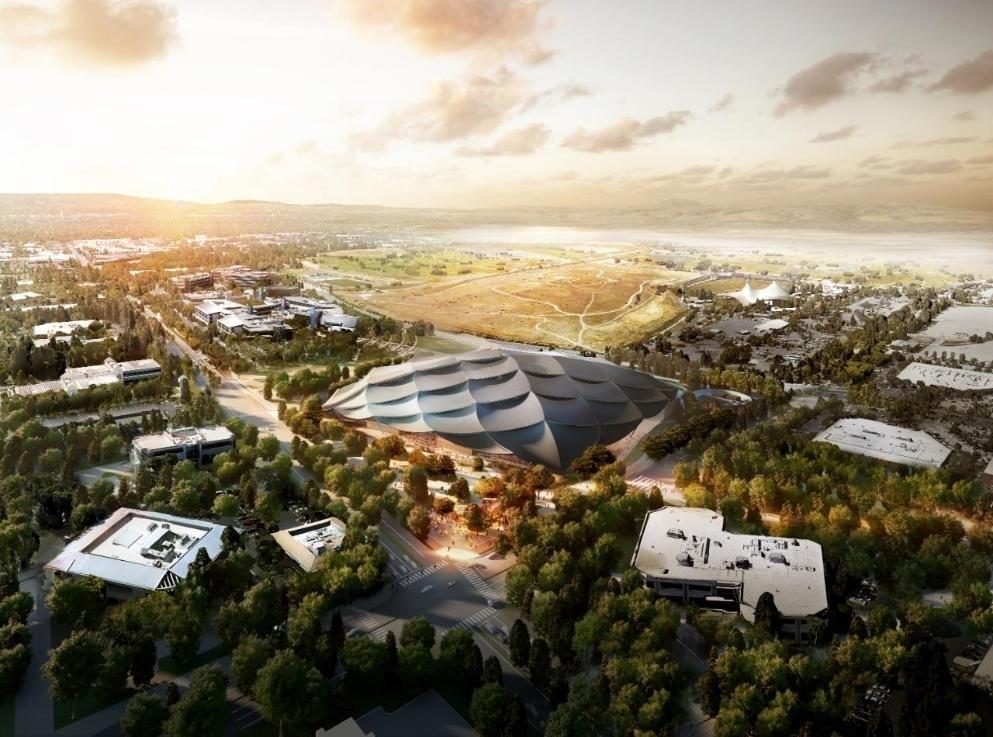Google (re)invents itself
Internet giant Google wants to do more than provide the right answers every time on the digital front. With the construction of the new headquarters in Silicon Valley, it wants to supply the solution to every workplace problem. Specifically, it aims to revolutionize working environments completely!
At least in the digital domain, Google has repeatedly turned our world on its head over the past two decades. Nevertheless, the company’s own headquarters have been treading water to a certain degree in recent years. Googleplex – the current corporate headquarters designed by star architect Clive Wilkinson – has served for 15 years without ever having a real update.
Gigantic Google headquarters
All of this is now set to change – out with the old and in with the new! In any case, this is what the multinational itself has promised. It has already begun to construct gigantic new headquarters in the direct vicinity of the current Google Campus in Mountain View, California. Completion is already scheduled for 2021. Above all, however, the new construction aims not only to be a suitably striking and prestigious complex but also to revolutionise the way people work.
This was what Bjarke Ingels, founder of internationally renowned architectural firm BIG, has declared. Together with Thomas Heatherwick of Heatherwick Studio, he was commissioned by Google with this forward-looking project. As Ingels explains, the goal is clear: “The state-of-the-art office building must create new industry standards – to be known as Google 2.0 – that will raise the bar for companies all over the world.” After all, although Silicon Valley has been a major global driving force behind innovation and economic growth in recent decades, it has focused its efforts almost exclusively on the digital domain.
Innovation in the physical world
A development that, as Ingels puts it, “has an enormous influence on the social sphere and on how people interact with one another” but which has not manifested itself to any great degree in the physical world. As he explains: “Our goal at Google is to translate part of this digital energy and part of this digital intelligence into our physical surroundings.”
In concrete terms, this means that the plans for the building complex needed to combine two major objectives. As well as having an architecturally unique exterior, its interior needs to permit a whole new kind of work set-up that is second to none. Accordingly, the construction will resemble a gigantic tent, 33 metres high. In keeping with this idea, the girders holding up the gigantic roof will resemble tent poles.
Rainwater for toilets
At the same time, the entire roof is to be covered with solar panels that will meet 40% of the whole building’s energy needs. The two architects also promise that every drop of rainwater that falls on the roof will be collected by its own cistern systems and ultimately used for flushing toilets and irrigating the extensive garden areas that have been planned.
The aim is for the new campus to look less like an office building of a large company and more like a friendly business meeting.
Bjarke Ingels, architect
However, if we are to believe Bjarke Ingels, there are far more changes in store for Google employees: “The aim is for the new campus to look less like an office building of a large company and more like a friendly business meeting.” In the outside area, 20 interior courtyards with different designs – inspired by nearby grassy hills, saltwater lagoons and the ocean – will be available for gatherings and meetings.
Lego-like office design
Above all, however, Google employees should no longer feel as if they are working in rigid surroundings. Just like Lego bricks, the offices and their components will be very light and therefore flexible. This will allow Google to put together teams for individual projects quickly and easily. As well as this, transparent materials should, at any given time and ideally in any part of the building, convey a sense of being in open natural surroundings.
And finally, the digital giant promises to play an active role in helping its people to get and stay physically fit. All with the aid of a positively ancient technology: the bicycle! As well as building cycle paths to the headquarters from all directions, Google plans to provide bicycle stands with spaces for 780 bikes.
Given that some 10,000 people work there, a few more of those might be needed…
Text: Johannes Stühlinger
Translation: Rosemary Bridger-Lippe
Images: Google
